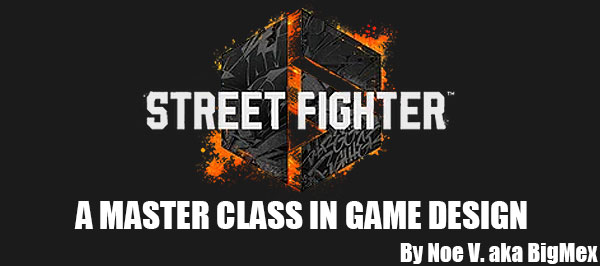
Street Fighter 6 was bringing multiple themes together in the climax of the World Tour story. The main plot was seeing your character get into the national tournament. At the same time we had the disappearance of Bosch, and the emergence of his alter-ego the Cardboard Combatant. We had the promise of his safe return to his sister. We were also dealing with a resistance movement building in Old Nayshall. The tourism market was booming, at the same time a large portion of the country was living in abject poverty. Corporate raiders were setting up shop, and rapid industrialization was happening all around. Believe it or not all of these things were connected.
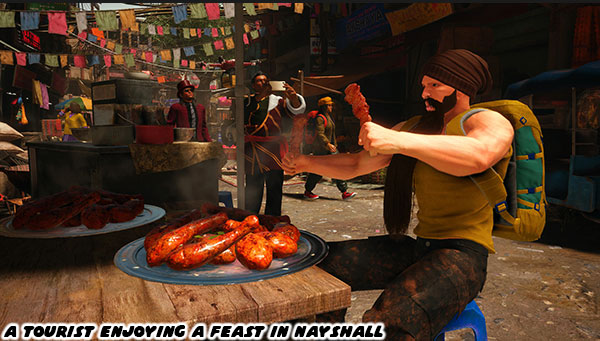
For the past 30+ years fighting games mostly told us the story. We would get to see various possible endings when playing through the story mode. They never showed us all of the events that caused a bad guy to come to power, and take over a nation. When Street Fighter II came out we had no idea how Vega / M.Bison / Dictator had risen to power. We just knew he was a very powerful villain that was running a Thai-adjacent country called Shadowlaw / Shadaloo. All of the exposition would be explored in comic books, and manga. Fighting games in the early ‘90s were not ready to explore a deep plot. It just wasn't technically feasible with the technology of the time. Thankfully the hardware, and software had caught up to the vision of an inspired team. Street Fighter 6 was actually placing audiences on the ground floor.

A government coup d'état, the takeover of a country did not happen overnight. A lot of things were required in order to destabilize a nation. We're talking about no jobs, money being worthless, grocery stores running bare, no fuel, an angry, and despondent population, etc. More often than not the forceful transfer of power happened from within. In SF6 a bunch of Non-Government Organizations had moved into Nayshall. They were promising to give everyone a better future. In real life NGO’s were often a force for good. They delivered medicine, and relief to war torn nations. They helped refugees rebuild their lives in a new country, helped communities recover from a hurricane. Some even tried to raise awareness about cancer, heart disease, and help families struggling with medical issues. However the largest NGOs also lobbied world governments for contracts, and by extension more power. It would be possible to mask criminal activity behind the guise of an altruistic company.
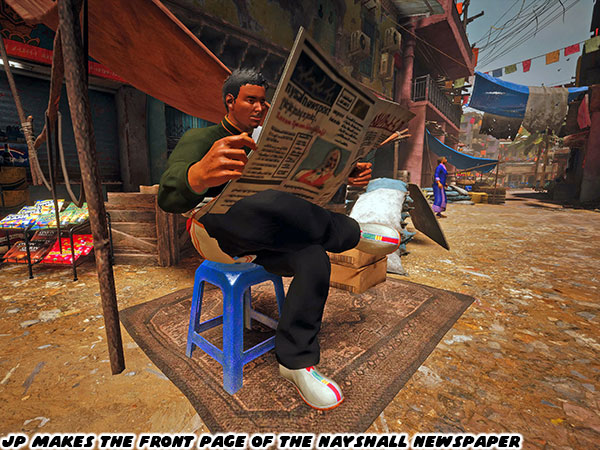
A takeover could happen gradually from any number of sources. Sadly it often happened with the favor of the people. In SF6 there was a ringmaster named Johann Petrovich aka JP pulling the strings in Nayshall. He was controlling the narrative, the media, and painting himself as the best thing that could have happened to the country. He was asserting control in secret at the highest level. He had gotten the NGOs to invest in the nation, and begin exploiting its resources, and people. Sadly most of the residents didn’t really understand the long term damage that he was doing to the country. The former nomadic sheep herder community were being distracted with all of the technology they suddenly had access to. It felt like many of them were willing to trade their sovereignty for free wifi.
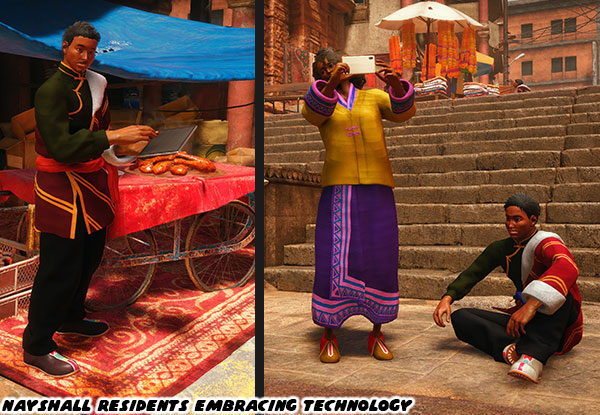
Unfortunately for JP the country, and people of Nayshall were very resilient. Their ancestors were warriors, their king was descended from a long line of warriors, even their god was a warrior god. His name was Suval’hal, and he resided in the mountain baring his name. We could see carvings if this deity in the Foothills of Mount Vashal. I believe that the inspiration for this myth, and this character came from
Lord Surya, the Sun according to Hindu mythology.
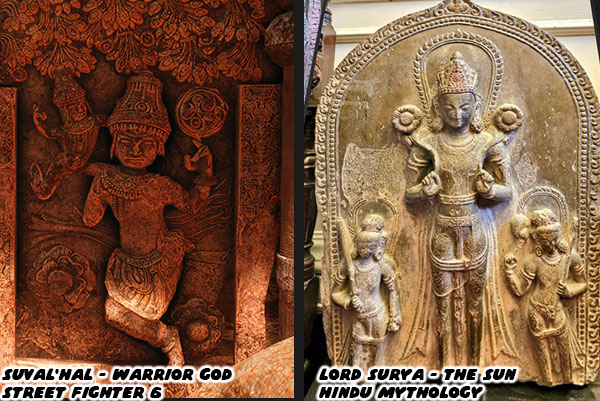
The people that worshiped the old god knew that they were warriors at heart. They were willing to fight to protect their countrymen, and their way of life. The idea of a warrior monk was alive, and well in Nayshall. It wasn't restricted to the hot-headed Retsu. A large portion of the monks could be found meditating, training, and fighting on the path leading up to Mount Vashal.
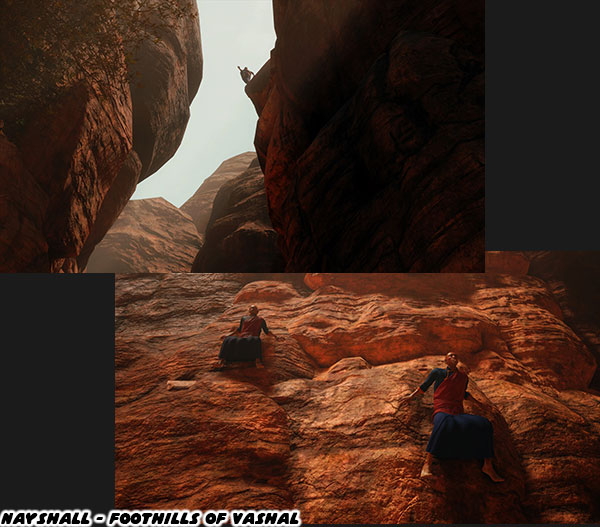
The Foothills of Vashal was the third unique area in Nayshall. Old Nayshall, the Lowlands, and Foothills of Vashal each had their own theme. They were connected by a few rocky paths, and stone stairs. Tourists wandered freely between the areas. Some just sightseeing, some looking for deals, and some were looking for spiritual enlightenment. There was something to be said for spiritual tourism. It was a big business. At night you would see actual businessmen from the big city, the “New Nayshall” visiting as well. They all looked like foreigners. They may have been contractors that followed the NGOs into the country. These “suits” were mostly obsessed with bodybuilding, and looking for new business avenues. They didn’t seem to be as powerful, or intelligent as JP.
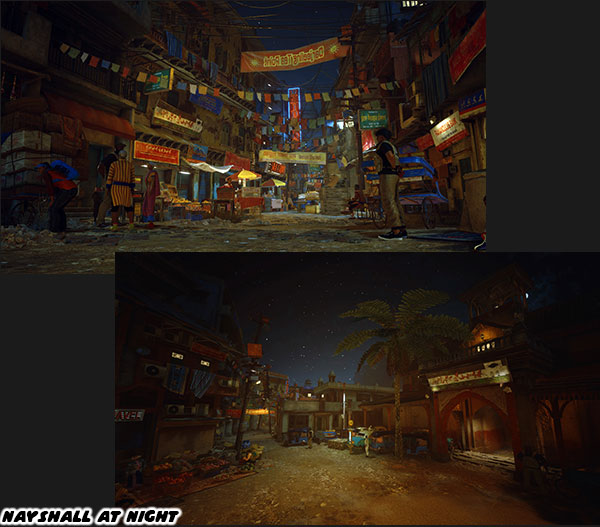
The resistance was building strength in numbers. The signs of which were all over the streets. They manifested as the graffiti of the Lowlands. This was where the resistance members met in secret. Enormous murals depicting their warrior heritage, and a goddess were among the best pieces created for the game. Other pieces created for Nayshall were more playful, such as the curry plate that doubled as a graffiti
throw up.
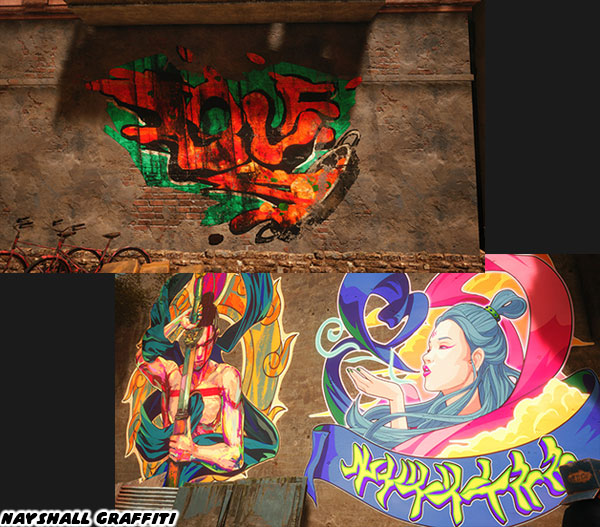
The absolute best resistance propaganda in the game was hidden in plain sight. One of the things that most every player would notice in Nayshall were posters for a fictional movie. It was another one of those things that people might think was a throw away detail. After all it looked like a typical Indian action movie. There was a long-haired guy with a mustache holding a gun, and posed in front of a woman. A helicopter was in the background, along with soldiers, and explosions. A banner of the film was in the center of the Lowlands arena. There was even a large billboard for the movie in the heart of the city. The Street Fighter 6 developers actually put a message in the poster. The movie was titled Desh Ka Badla. It meant “Revenge of the country” in Hindi. On the top of the ad there was a tagline that translated to “Our revenge will be the laughter of our children.” The enormous billboard had another phrase painted over it. I think that it said aazaadee, or freedom, but I couldn’t quite make out.
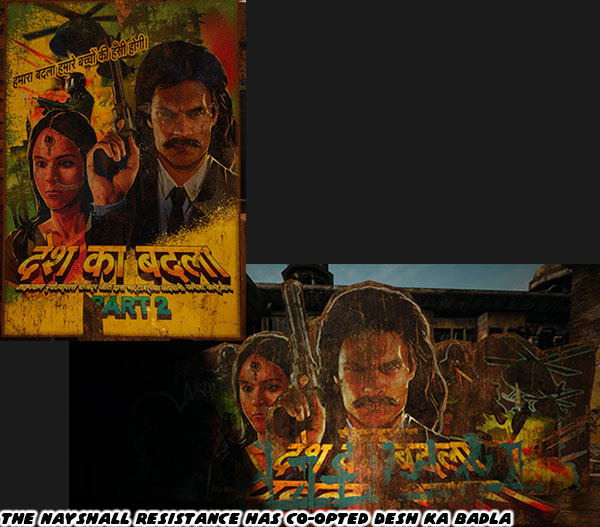
Capcom was doing more for the sake of storytelling, and world building than any of the rival studios. The amount of work that went into SF6 was absurd. I thought I was obsessed with detail, but the senior team was on another level. Reaching the climax of the World Tour meant climbing a literal mountain. There would be many obstacles along the way, and many revelations. We’re going to start our ascent on the next blog. I hope to see you back for that. If you are a long time fan of Final Fight, or Street Fighter then I would like to hear your impressions of SF6. If you have never played any game previously then tell me your experiences in the comments section please. As always if you would like to sponsor me
please visit my Patreon page and consider donating each month, even as little as $1 would help make better blogs and even podcasts!




















No comments:
Post a Comment